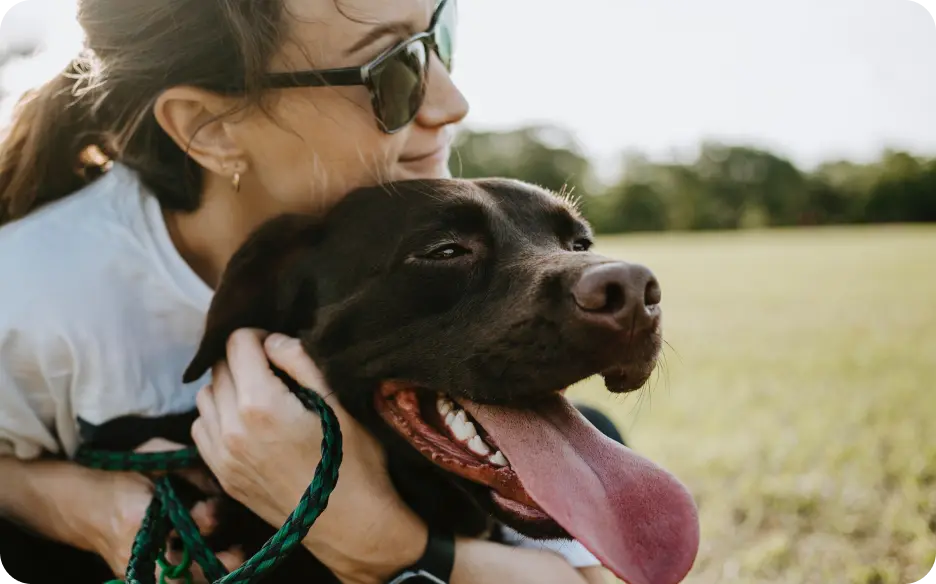Seeing your dog twitch can be concerning. Whether it’s a subtle quiver of the nose or a more pronounced spasm of the legs, these movements can raise questions about your pet’s health. As a responsible dog owner, it’s natural to want to understand what is happening and whether it requires attention.
Common Reasons for Twitching
Twitching in dogs can occur for various reasons, from benign to serious. Observing the context of the behavior, its duration, and any accompanying signs is crucial. Many dog owners report twitching during sleep. If your dog is twitching while resting, it may simply be dreaming. Like humans, dogs experience rapid eye movement (REM) sleep, which is when dreaming occurs. During this phase, you might notice your dog’s legs moving as if they are running or hear occasional noises. This is generally normal behavior, particularly in younger dogs or breeds known for being active in their dreams.
Awake Twitching: What to Watch For
If your dog twitches while awake, pay close attention to the behavior. Twitching can occur due to excitement, anxiety, or even pain. For instance, if your dog has just finished a vigorous game of fetch, twitching might signal excitement or an adrenaline rush. This type of twitching is usually harmless and will subside as your dog calms down.
However, if the twitching is accompanied by other symptoms—such as lethargy, loss of appetite, or changes in behavior—it may be time to consult a veterinarian. This could indicate a seizure disorder or other neurological issues. Seizures in dogs can manifest in various ways, including twitching, loss of control, and disorientation. Documenting the duration and characteristics of the twitching episodes can provide valuable information for your veterinarian.
Allergies and Skin Irritations
Allergies and skin irritations can also lead to twitching. Dogs may twitch or scratch at their skin if they experience discomfort from allergies caused by food, environmental factors, or parasites like fleas. If you notice your dog twitching and scratching or licking certain areas excessively, consulting a veterinarian about treatment options is advisable.
Muscle Spasms and Overexertion
Muscle spasms may cause twitching as well. Dogs can experience muscle cramps or spasms, particularly after overexertion during play or exercise. If your dog appears otherwise healthy and the twitching resolves quickly, it might just be a temporary reaction. However, persistent twitching that seems to cause discomfort should prompt a visit to the vet.
Nutritional Considerations
Nutritional deficiencies can also lead to twitching or spasms. Dogs require a balanced diet to maintain health, and deficiencies in certain vitamins and minerals can affect nerve function. For instance, a lack of specific B vitamins may contribute to twitching. If you suspect your dog’s diet might not be meeting their nutritional needs, discussing it with your veterinarian can ensure they receive a balanced diet.
Managing Stress and Anxiety
Stress and anxiety can manifest physically in dogs. If twitching occurs in situations that typically cause stress, such as during thunderstorms or fireworks, it might signal anxiety. Identifying your dog’s triggers and creating a more secure environment can help alleviate stress. Behavioral modification techniques or medications may also be recommended by your veterinarian to manage anxiety.
The Importance of Observation
Being observant and proactive regarding your dog’s health is essential. If your dog’s twitching seems unusual or is accompanied by other concerning symptoms, seeking professional help is crucial. A veterinarian can assess the situation and recommend appropriate tests or treatments based on their findings.
Understanding why your dog is twitching involves careful observation and consideration of the context. While twitching during sleep is often harmless, twitching when awake can indicate various issues, from excitement to potential health concerns. Staying attuned to your dog’s behavior can help you make informed decisions, ensuring they lead a happy, healthy life.
Your attentiveness can detect problems early, allowing for timely intervention and treatment. If something feels off, trust your instincts and reach out for help. Witnessing your dog twitch can be alarming, but understanding the various causes can alleviate concerns. By remaining observant and seeking veterinary advice when necessary, you can help ensure your dog stays happy and healthy.



